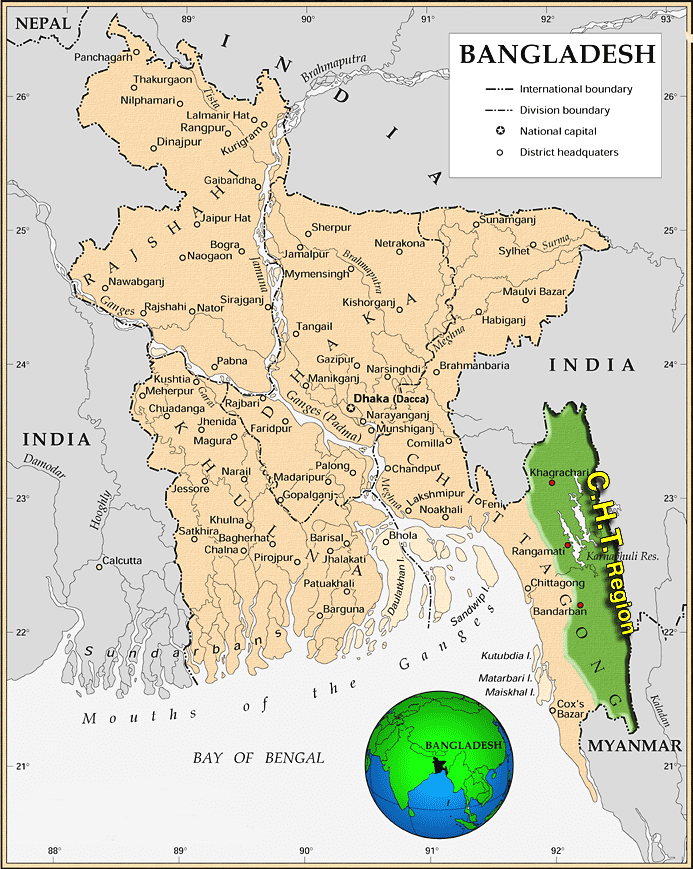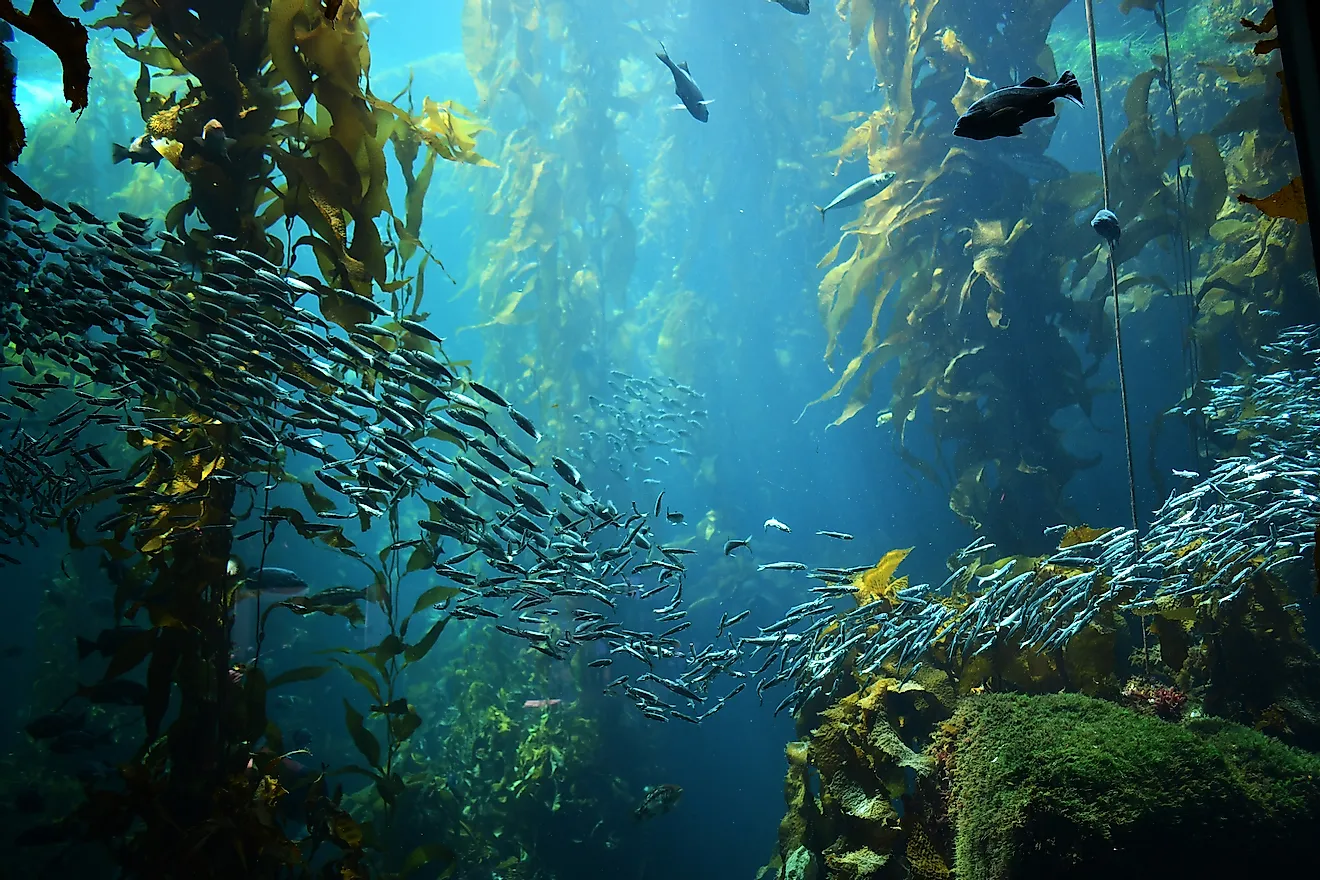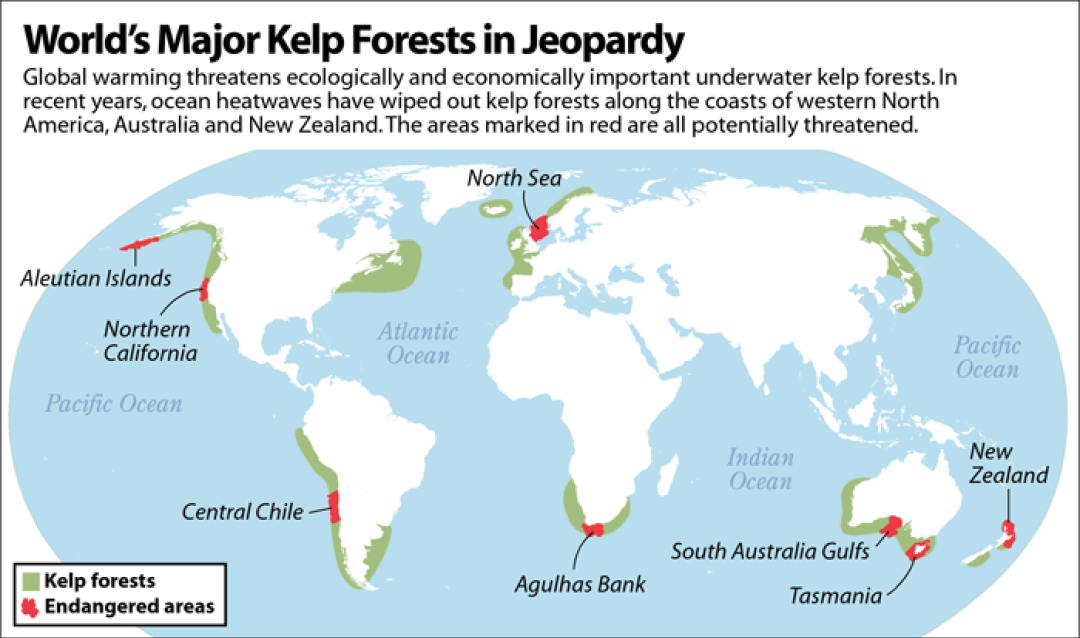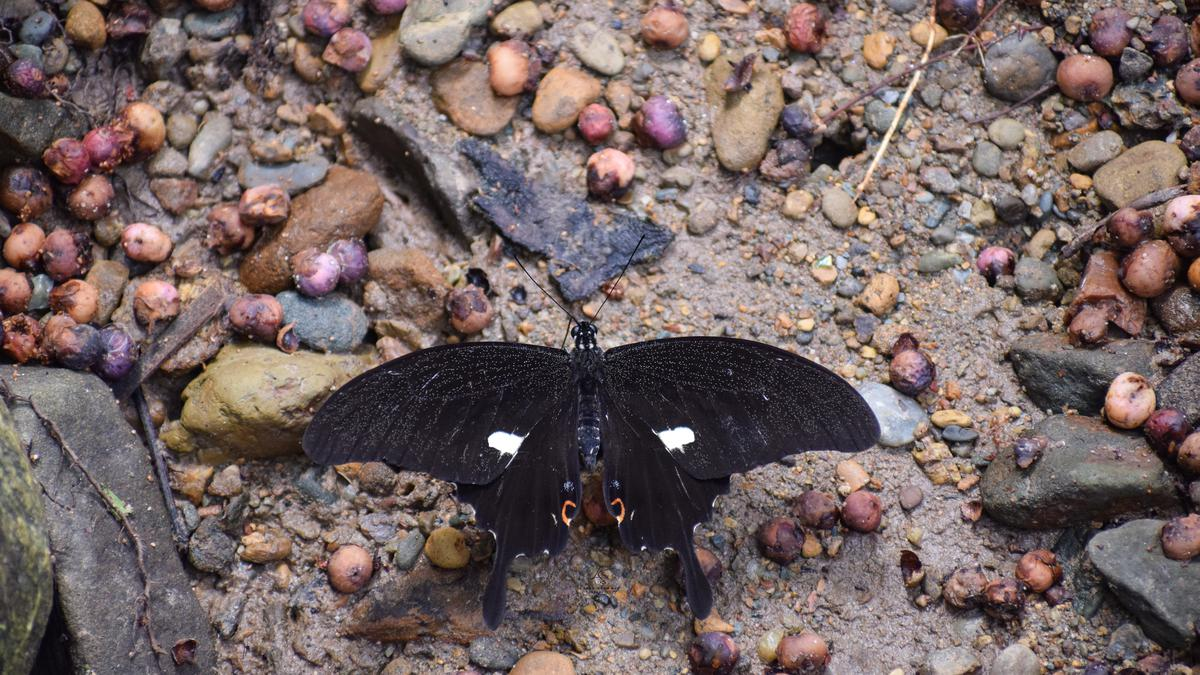Prioritizing Mental Well-being
For Prelims: National Institute of Mental Health and Neuro-Sciences, National Mental Health Program (NMHP), Mental Health Care Act 2017, Kiran Helpline, MANAS (Mental Health and Normalcy Augmentation System), Poverty, Ayushman Bharat.
For Mains: Status of Mental Healthcare in India, Issues Associated with Mental Health, Initiatives by Government of India Related to Mental Health.
Why in News?
According to World Health Organisation, India’s suicide rate in 2019, at 12.9/1,00,000, was higher than the regional average of 10.2 and the global average of 9.0.
- Suicide has become the leading cause of death among those aged 15–29 in India. While every precious life lost through suicide is one too many, it represents only the tip of the mental health iceberg in the country, particularly among young adults. Women tend to suffer more.
What is the Status of Mental Healthcare in India?
- About:
- Mental health encompasses emotional, psychological, and social well-being.
- It influences cognition, perception, and behaviour. It also determines how an individual handles stress, interpersonal relationships, and decision-making.
- In India, according to National Institute of Mental Health and Neuro-Sciences data, more than 80% of people do not have access to mental healthcare services for a multitude of reasons.
- Mental health encompasses emotional, psychological, and social well-being.
- Initiatives by Government of India Related to Mental Health:
- National Mental Health Program (NMHP): The NMHP was adopted by the government in 1982 in response to a large number of mental disorders and shortage of mental health professionals.
- Mental Health Act: As part of the Mental Health Care Act 2017, every affected person has access to mental healthcare and treatment from government institutions.
- Kiran Helpline: In 2020, the Ministry of Social Justice and Empowerment launched a 24/7 toll-free helpline 'Kiran' to provide mental health support.
- MANAS Mobile App: To promote mental wellbeing across age groups, the Government of India launched MANAS (Mental Health and Normalcy Augmentation System) in 2021.
- Issues Associated with Mental Health:
- Social Media: Increased use of certain kinds of social media is exacerbating stress and mental ill health for young people.
- Social media detracts from face-to-face relationships, which are healthier, and reduces investment in meaningful activities.
- More importantly, it erodes self-esteem through unfavourable social comparison.
- Covid-19 Pandemic: The Covid-19 pandemic has further exacerbated the problem. Globally, it might have increased the prevalence of depression by 28% and anxiety by 26% in just one year between 2020 and 2021, according to a study published in Lancet.
- Again, the large increases have been noted among younger age groups, stemming from uncertainty, financial and job losses, grief, increased childcare burdens, in addition to school closures and social isolation.
- Poverty: Mental health is closely linked to poverty in a vicious cycle of disadvantage. People living in poverty are at greater risk of experiencing mental health conditions.
- On the other hand, people experiencing severe mental health conditions are more likely to fall into poverty through loss of employment and increased health expenditure.
- Lack of Mental Health Infrastructure: Currently, only 20-30% of people with mental illnesses receive adequate treatment.
- One major reason for such a wide treatment gap is the problem of inadequate resources. Less than 2% of the government health budget is devoted to mental health issues.
- Also, the list of essential medicines includes only a limited number of WHO-prescribed mental health medications.
- Social Media: Increased use of certain kinds of social media is exacerbating stress and mental ill health for young people.
How India can Reimagine Mental Health?
- There is a need for an urgent and well-resourced “whole-of-society” approach to protecting, promoting and caring for the mental health of our people. This should be based on the following four pillars:
- Destigmatizing Mental Health: Killing the deep stigma surrounding mental health issues which prevents patients from seeking timely treatment and makes them feel shameful, isolated and weak.
- Including Mental Health in Public Health Programme: Making mental health an integral part of the public health programme to reduce stress, promote a healthy lifestyle, screen and identify high-risk groups and strengthen mental health interventions like counselling services.
- Special emphasis will need to be given to schools.
- In addition, we should pay special attention to groups that are highly vulnerable to mental health issues such as victims of domestic or sexual violence, unemployed youth, marginal farmers, armed forces personnel and personnel working under difficult conditions.
- Mental Health Infrastructure: Creating a strong infrastructure for mental health care and treatment. Substantial investments will be needed to address the gaps in the mental health infrastructure and human resources.
- Working on Affordability Aspects: Mental health services should be made affordable for all. Improved coverage without corresponding financial protection will lead to inequitable service uptake and outcomes.
- All government health assurance schemes, including Ayushman Bharat, should cover the widest possible range of mental health conditions.
UPSC Civil Services Examination, Previous Year Question
Q. We can never obtain peace in the outer world until and unless we obtain peace within ourselves. (2021)
India’s Centralised Power Market Shift
For Prelims: European Union, Market-Based Economic Dispatch (MBED), One Nation One Grid One Frequency One Price, Electricity Act, 2003, Electricity Distribution Companies (DISCOMs), Renewable energy, Electric vehicles.
For Mains: Market-Based Economic Dispatch (MBED) Model, Concerns Associated with the Centralised Model of MBED.
Why in News?
India is changing its power market system from a decentralized, voluntary and short-term market to a mandatory pool model that eliminates fixed-price contracts. While, the European Union is going in the opposite direction.
What is the European Union's Policy Related to the Power Market?
- The EU wants to change its power market because a gas shortage caused high electricity prices in 2022.
- The high prices happened because electricity prices are set by the most expensive power plant, usually a gas plant.
- The European Commission is considering different ways to change how power plants sell electricity.
- They want to use long-term contracts that give power plants a fixed price for their electricity.
- This will help make electricity prices more stable for households and businesses.
What is India’s New Market-Based Economic Dispatch (MBED) Model?
- India is developing a new electricity market model called the MBED mechanism.
- This will centralize scheduling for dispatching the country's annual electricity consumption of around 1,400 billion units.
- MBED is a way forward to deepen power markets in line with the Centre’s ‘One Nation, One Grid, One Frequency, One Price’ formula.
- It will ensure that the cheapest electricity generating resources across the country are supplied to meet the overall system demand and will therefore be a win-win for both the distribution companies and the generators and result in savings for consumers.
- It will also mark a clear shift from a decentralized model which is backed by the Electricity Act, 2003.
- Currently, the electricity grid is divided into state-wise autonomous control areas managed by the State Load Dispatch Centers (SLDCs), which in turn are supervised by Regional Load Dispatch Centers (RLDCs) and the National Load Dispatch Centre (NLDC).
- The MBED model wants to change this by having a central market operator in charge of all the electricity. This new model would limit the current options and discoms and State Load Dispatch Center would have to buy or sell electricity in real-time even if it's just to balance demand.
- India is also making a new rulebook for the electricity grid and a new way for people to use the electricity network called GNA (General network access) that is more open and flexible.
What are the Concerns Associated with the Centralized Model of MBED?
- Impact on State Autonomy: MBED will have effect on the relative autonomy of states in managing their electricity sector, including their own generating stations, and make the Electricity Distribution Companies (DISCOMs) (mostly state-owned) entirely dependent on the centralized mechanism.
- Clash with Emerging Decentralized Market: It could potentially clash with emerging market trends i.e., increase in renewable energy in the overall generation mix and the increasing numbers of electric vehicles plugging into the grid.
- All of these actually necessitate greater decentralization of markets and voluntary pools for efficient grid management and operations.
- Grey Areas: The must-run status of some power stations such as Trombay TPS, Mumbai or the Dadri TPS in the NCR region will come under question.
- These power stations are critical for security of supply to key cities such as Mumbai or Delhi and in islanding operations in the event of a grid failure.
Way Forward
- Power, being a subject of Concurrent List of Indian Constitution, recommendations from states should be taken into consideration for effective implementation of the new model.
- Security Constrained Economic Dispatch (SCED), an algorithm developed by the NLDC can be the potential solution, which is aimed at assisting regulators in making informed calls on scheduling decisions on a nationwide basis.
UPSC Civil Services Examination, Previous Year Question (PYQ)
Q1. Consider the following statements: (2019)
- Petroleum and Natural Gas Regulatory Board (PNGRB) is the first regulatory body set up by the Government of India.
- One of the tasks of PNGRB is to ensure competitive markets for gas.
- Appeals against the decisions of PNGRB go before the Appellate Tribunals for Electricity.
Which of the statements given above are correct?
(a) 1 and 2 only
(b) 2 and 3 only
(c) 1 and 3 only
(d) 1, 2 and 3
Ans: (b)
Q2. Which one of the following is a purpose of ‘UDAY’, a scheme of the Government? (2016)
(a) Providing technical and financial assistance to start-up entrepreneurs in the field of renewable sources of energy
(b) Providing electricity to every household in the country by 2018
(c) Replacing the coal-based power plants with natural gas, nuclear, solar, wind and tidal power plants over a period of time
(d) Providing for financial turnaround and revival of power distribution companies
Ans: (d)
Challenges Faced by Chin-Kuki-Mizo Group
Prelims: Refugee in India, 1951 Refugee Conference, Foreigners Act of 1946, Citizenship Amendment Act, 2019 (CAA), Rohingya Refugee, United Nations High Commissioner for Refugees.
Mains: Challenges Faced by Chin-Kuki-Mizo Group, Refugee Crisis, India’s Refugee Policy.
Why in News?
Recently, the Zo Reunification Organisation (ZORO), representing the Chin-Kuki-Mizo communities, has sought the help from India in ending the “policy of extermination” of Ethnic Minorities inhabiting the Chittagong Hill Tracts (CHT) of Bangladesh.
- More than 300 people belonging to the Chin-Kuki-Mizo group have taken shelter in Mizoram’s Lawngtlai district since November 2022, following an alleged offensive by the Bangladesh army in collusion with the Arakan Army, a Rohingya Muslim extremist group.
What are the Issues faced by Chin-Kuki-Mizo Group in Bangladesh?
- The constitutional and human rights of the indigenous Kuki-Chin tribes, are being violated in the CHT with impunity under a policy of the Bangladesh army to exterminate them.
- CHT is a 13,000 sq. km hilly and forested area in south-eastern Bangladesh, bordering India's Mizoram and Tripura and Myanmar's Chin and Rohingya-inhabited Rakhine States.
- The pre-British CHT had self-governing chiefdoms and chieftaincies. The population of these groups was categorised either as the Khyoungtha, tribes who live along the river banks, or the Toungtha, tribes who live in the thick jungles of the hills.
- The tribes remained beyond the realms of Hindu kings and Muslim nawabs, but the annexation of the CHT by the British in 1860 made them vulnerable to external pressures.
- The British gave special constitutional status to the CHT to protect the identity, customs, culture, tradition and ancestral land of the tribes. The restrictive laws were, however, repealed by 1903 to let the dwellers of the plains infiltrate the areas of the highlanders.
- Contrary to the expectations of the indigenous people, the CHT was merged with Pakistan in 1947, all the indigenous tribes began to face discrimination in all aspects of life.
- While the tribal population of the CHT declined drastically, the government of Bangladesh encroached upon the ancestral land of the indigenous tribes, particularly the Kuki-Chin people, in the name of promoting tourism.
What are their Demands?
- The Kuki-Chin tribes of the CHT have been demanding a separate State due to the large-scale influx of non-tribal people into the hills. But the Bangladesh government chose to step up its oppressive measures.
- The ZORO asked India to advise his Bangladeshi counterpart to declare a ceasefire with the Kuki-Chin National Army (KNA) and stop abusing the rights of the Kuki-Chin people in the CHT.
- The organisation also appealed India to direct the Ministry of Home Affairs and the Border Security Force not to drive away the Kuki-Chin people who are fleeing Bangladesh and taking refuge among their “blood-related tribes” in Mizoram.
What is India’s Refugee Policy?
- India lacks specific legislation to address the problem of refugees, in spite of their increasing inflow.
- India is not a party to the 1951 Refugee Convention and its 1967 Protocol, the key legal documents pertaining to refugee protection.
- However, India has had a stellar record on the issue of refugee protection. India has a moral tradition for assimilating foreign people and culture.
- Further, the constitution of India also respects the life, liberty, and dignity of human beings.
- The Supreme Court in the National Human Rights Commission vs. State of Arunachal Pradesh (1996) held that “while all rights are available to citizens, persons including foreign citizens are entitled to the right to equality and the right to life, among others.”
- Further, Article 21 of the Constitution encompasses the right of non-refoulement.
- Non-refoulement is the principle under international law which states that a person fleeing persecution from his own country should not be forced to return to his own country.
What is the Status of Refugees in India?
- Since its independence, India has accepted various groups of refugees from neighbouring countries, including:
- Partition refugees from Pakistan in 1947.
- Tibetan refugees that arrived in 1959.
- Chakma and Hajong from present day Bangladesh in early 1960s.
- Other Bangladeshi refugees in 1965 and 1971.
- Sri Lankan Tamil refugees from the 1980s.
- Rohingya refugees from Myanmar.
What is the Current Legislative Framework to Handle Refugees?
- Foreigners Act of 1946: Under Section 3, the Central government is empowered to detect, detain and deport illegal foreign nationals.
- Passport (Entry into India) Act, 1920: Under Section 5, authorities can remove an illegal foreigner by force under Article 258(1) of the Constitution of India.
- Registration of Foreigners Act of 1939: Under this, there is a mandatory requirement under which all foreign nationals (excluding overseas citizens of India) visiting India on a long-term visa (more than 180 days) is required to register themselves with a Registration Officer within 14 days of arriving in India.
- Foreign registration was mandated and is regulated by the Registration of Foreigners Act, 1939 and the Registration of Foreigners Rules, 1992.
- Citizenship Act, 1955: It provided provisions for renunciation, termination, and deprivation of citizenship.
- Further, Citizenship Amendment Act, 2019 (CAA) seeks to provide citizenship only to Hindu, Christian, Jain, Parsi, Sikh, and Buddhist immigrants persecuted in Bangladesh, Pakistan, and Afghanistan.
UPSC Civil Services Examination Previous Year Question (PYQ)
Prelims
Q. Consider the following pairs: (2016)
| Community sometimes mentioned in the news | In the affairs of | |
| 1. | Kurd | Bangladesh |
| 2. | Madhesi | Nepal |
| 3. | Rohingya | Myanmar |
Which of the pairs given above is/are correctly matched?
(a) 1 and 2
(b) 2 only
(c) 2 and 3
(d) 3 only
Ans- (c)
Mains
Q. How does illegal transborder migration pose a threat to India’s security? Discuss the strategies to curb this, bringing out the factors which give impetus to such migration. (2014)
World Economic Situation and Prospects 2023
Prelims: GDP, SDG, War in Ukraine, Covid, Inflation.
Mains: World Economic Situation and Prospects.
Why in News?
Recently, the United Nations has released a new report World Economic Situation and Prospects 2023, which stated that the Global Gross Domestic Product (GDP) is likely to drop to 1.9 % in 2023 from 3 % in 2022.
- Series of severe and mutually reinforcing shocks — the Covid-19 pandemic, the war in Ukraine and resulting food and energy crises, surging inflation, debt tightening, as well as the climate emergency.
What are the Findings of the Report?
- Inflation: The world’s average inflation rate was at 9% in 2022, which led to budgetary constraints in several developed as well as developing countries.
- Recession: Current downturn has slowed the pace of economic recovery from the Covid-19 crisis, threatening several countries with the prospects of recession in 2023.
- Most developing countries have seen a slower job recovery in 2022.
- Disproportionate losses in women’s employment during the initial phase of the pandemic have not been fully reversed.
- Slight Growth in Global Output: The world’s output growth can bounce back to 2.7 % in 2024, subject to a change in the war situation and the disruption of supply chains.
- China is projected to grow at 4.8 % in 2023 and 4.5 % in 2024.
- The US is estimated to register a 0.4 % economic growth this year and 1.7 % in 2024.
- Russian Export: Russian exports increased in 2022 as trade with China, India and Turkey surged.
- Outlook of South Asia: In South Asia, the economic outlook has significantly deteriorated due to high food and energy prices, monetary tightening and fiscal vulnerabilities.
- Average GDP growth is projected to moderate from 5.6 % in 2022 to 4.8 % in 2023.
- Challenging prospects for economies like Bangladesh, Pakistan and Sri Lanka, who have sought financial assistance from the International Monetary Fund (IMF) in 2022.
What about Indian Prospect?
- Growth Rate: Growth in India is expected to remain strong at 5.8 %, albeit slightly lower than the estimated 6.4 % in 2022, as higher interest rates and a global slowdown weigh on investment and exports.
- India’s food and energy subsidies prevented a major downfall.
- India will grow at 6.7 % in 2024, the fastest-growing major economy in the world.
- Inflation: Annual inflation is estimated at 7.1% in 2022. India’s inflation is expected to decelerate to 5.5 % in 2023 as global commodity prices moderate and slower currency depreciation eases imported inflation.
- Unemployment: Unemployment rate in 2022 declined to pre-pandemic levels through stepped-up urban and rural employment, indicating strong domestic demand.
- However, youth employment remained below pre-pandemic levels, particularly among young women.
What are the Recommendations?
- Calibration of Macroeconomic Policies: Macroeconomic policies need to be carefully calibrated to strike a balance between stimulating output and taming inflation.
- This will require more effective coordination among the major central banks, supported by clear policy messages to manage and moderate inflationary expectations.
- De-anchoring of Inflation Expectations: While reforming existing frameworks could yield considerable benefits, central banks will also need to pursue a deliberate and comprehensive process to avoid losses in credibility and the de-anchoring of inflation expectations.
- Reprioritize Public Expenditures: Governments will need to reallocate and reprioritize public expenditures to support vulnerable groups through direct policy interventions.
- This will require strengthening social protection systems and ensuring continued support through targeted and temporary subsidies, cash transfers and discounts on utility bills.
- Scale up SDG Financing: Stronger international commitment is urgently needed to expand access to emergency financial assistance and scale up SDG financing for:
- Strengthening of social protection systems, ensuring continued support through targeted and temporary subsidies, cash transfers, and discounts on utility bills, which can be complemented with reductions in consumption taxes or custom duties.
Kelp Forests on Decline
Why in News?
A recent study has revealed that Kelp forests are declining because of climate change.
What are the Highlights of the Study?
- Ecklonia radiata, a dominant kelp species in the southern hemisphere, is vulnerable to climate change, especially in regions near the equator.
- Rising temperatures are causing declines in the species along the eastern Australian coastline and it is expected to decline further in the future globally.
- In situ protection may not be possible but its unique genetic diversity can be preserved through ex situ preservation in culture banks for use in future restoration, hybridization, or adaptation strategies.
What are the Kelp Forests?
- About:
- Kelp forests are underwater ecosystems formed in shallow water by the dense growth of several different species.
- Kelp are large brown algae that live in cool, relatively shallow waters close to the shore.
- They attach to the seafloor and eventually grow to the water’s surface and rely on sunlight to generate food and energy, kelp forests are always coastal and require shallow, relatively clear water.
- They provide underwater habitats to hundreds of species of invertebrates, fishes, and other algae and have great ecological and economic value.
- Significance:
- It serves as a pertinent food source for a variety of marine creatures. Kelps are responsible for producing up to 60% of the carbon found in coastal invertebrates.
- As a diverse invertebrate and fish ecosystem, they serve as a habitat for birds to forage.
- It releases carbon into the coastal ecology, increasing its productivity. New biomass, detritus, and other materials are produced through primary production by kelp.
- World Distribution of Major Kelp Forests:
Shaheed Diwas
Why in News?
On January 30, 2023, India observes Martyrs' Day or Shaheed Diwas to pay tribute to all the freedom fighters who sacrificed their lives for the country. The day is also marked as the death anniversary of the nation's 'Bapu', Mahatma Gandhi.
- Martyrs’ Day or Shaheed Diwas or Sarvodaya Day is celebrated in India several times a year.
What is there to Know about Shaheed Diwas?
- In Remembrance Of:
- Mahatma Gandhi, who was born on October 2, 1869, was one of the most influential leaders of India and played a significant role in the independence of the country.
- On this day in 1948 Mahatma Gandhi was assassinated in the Birla House in New Delhi by Nathuram Godse.
- Way of Celebrating:
- India celebrates Martyrs' Day by paying tribute to Mahatma Gandhi's Samadhi at Raj Ghat in Delhi.
- The President, Vice President, Prime Minister, Defense Minister, and the three Service Chiefs (Army, Air Force, and Navy) pay their respects to the ‘Father of the Nation’.
- India celebrates Martyrs' Day by paying tribute to Mahatma Gandhi's Samadhi at Raj Ghat in Delhi.
- Significance:
- The significance of Shaheed Diwas lies in the fact that Mahatma Gandhi who led major movements against British rule through a non-violent approach.
- His philosophy was based on the principles of non-violence, the fight for truth (satyagraha), and political and individual freedom (Swaraj) and inspired millions of people with his principles.
- The significance of Shaheed Diwas lies in the fact that Mahatma Gandhi who led major movements against British rule through a non-violent approach.
Other Martyrs' Days in India: What are they?
| Days | About |
| March 23 |
|
| May 19 |
|
| July 13 |
|
| November 17 |
|
| November 19 |
|
| November 24 |
|
Bharat Parv 2023
Why in News?
Government of India is organising the six-day mega event “Bharat Parv” event from January 26-31, 2023, as part of the Republic Day celebrations.
- Bharat Parv started in 2016 and has been held annually at the lawns and Gyan Path in front of Red Fort until 2020. In 2021, it was held virtually.
What are the Key Points Related to Bharat Parv?
- The Ministry of Tourism has been designated as the nodal ministry for the event.
- The event includes a food festival, a handicraft mela, folk and tribal dance performances, cultural troupe performances, a display of Republic Day tableaux, and the illumination of the Red Fort, among other things.
- Branding and promotion of Dekho Apna Desh, Ek Bharat Shreshtha Bharat, G20 and Mission LIFE would be undertaken during the event.
- The program is a way to celebrate India’s unity in diversity and to make India a hub of civilization, culture, spirituality and inheritance in the next 25 years of Amrit Kaal.
- The event is also promoting Vocal for Local motto as many artisans across the country are also taking part in this.
Note
- Dekho Apna Desh: The Ministry of Tourism launched the ‘Dekho Apna Desh’ initiative in January 2020 with the objective of creating awareness among the citizens about the rich heritage and culture of the country and encouraging citizens to travel within the country.
- Ek Bharat Shreshtha Bharat: It was launched in 2015 to promote engagement amongst the people of different States/UTs so as to enhance mutual understanding and bonding between people of diverse cultures, thereby securing stronger unity and integrity of India.
- G20: India has assumed the charge of the G20 presidency.
- The G20 was formed in 1999 in the backdrop of the financial crisis of the late 1990s that hit East Asia and Southeast Asia in particular. It aims to secure global financial stability by involving middle-income countries.
- LiFE: The idea of LiFE was introduced by India during the 26th United Nations Climate Change Conference of the Parties (COP26) in Glasgow in 2021.
- The idea promotes an environmentally conscious lifestyle that focuses on ‘mindful and deliberate utilisation’ instead of ‘mindless and wasteful consumption.
Rapid Fire Current Affairs
Record Global Investments in Clean Energy Technology
According to BloombergNEF, for the very first time in history, investment in low-carbon energy technologies worldwide was equal to money spent on fossil fuels. BloombergNEF is a global strategic research service provider.
The amount of investment in cleaner energy technology in 2022 was USD 1.1 trillion - a 31% (of USD 261 billion) growth from 2021. However, the investment in fossil fuels was also simultaneously up USD 214 billion over 2021 levels.
The trillion-dollar investment in energy transition included renewables (solar, wind, nuclear), storage, charging infrastructure, hydrogen production, carbon capture (& utilisation & storage) and technology such as small-scale solar, heat pumps, and zero-emission vehicles.
China is still the leading manufacturer of low-carbon technologies. It attracted over half of the trillion-dollar investment at USD 546 billion, followed by the EU at USD 180 billion and the US at USD 141 billion.
Read More - Towards Green Energy Transition
Mughal Gardens Renamed as Amrit Udyan
In keeping with the theme of Azadi ka Amrit Mahotsav, the Government of India recently renamed the Mughal Gardens at Rashtrapati Bhavan as ‘Amrit Udyan’.
Mughal Gardens or now, Amrit Udyan, draw inspiration from the Mughal Gardens of Jammu & Kashmir, the gardens around the Taj Mahal and miniature paintings of India and Persia.
The design of Mughal Gardens was finalised by Sir Edwin Lutyens in 1917 in collaboration with William Mustoe, Director of Horticulture.
These gardens were never officially named Mughal Gardens; rather, came to be known so owing to the style of architecture - influenced by the Persian gardens, particularly the Charbagh structure. Afghanistan, Bangladesh, India, and Pakistan have a number of Mughal gardens.
Mughals were known to appreciate gardens; Babur Nama mentions Babur’s favourite kind of garden - Persian Charbagh style which was intended to create a representation of an earthly utopia – jannat.
Read More - Mughal Architecture, Azadi ka Amrit Mahotsav
India’s Newest Butterfly
A swallowtail butterfly disappearing from its previously known ranges from Myanmar and southern China to Vietnam has been recorded for the first time in India.
The butterfly is “extremely rare” Noble’s Helen (Papilio noblei), identified from three locations in the Namdapha National Park (Arunachal Pradesh).
Noble’s Helen is also found in Thailand, Laos and Cambodia.
Butterflies are considered vital indicators representing the state of biodiversity and key ecosystem functions.
Note - Arunachal Pradesh also has a state butterfly - Kaiser-i-Hind.
Read More - Namdapha National Park, White Tufted Royal Butterfly (another rare butterfly found in India)
Polar Vortex
According to scientists, the extremely cold weather that Asia is witnessing is largely the result of what is called a Polar Vortex. The term refers to an expanse of cold air that generally circles the Arctic but occasionally shifts south from the North Pole.
The term "vortex" refers to the counterclockwise flow of air that helps keep the colder air near the Poles. It always exists near the poles but weakens in summer and strengthens in winter.
Although there is a lack of consensus, it is believed that with a warming planet, shifts in the polar vortex are likely to become more frequent and pronounced.
Read More - Polar Vortex

-01.png)




